Mrs. Reed’s Christmas Treeby José Antonio López In addition to sharing our early Texas history with others through my Rio Grande Guardian online newspaper articles, I also wrote about growing up in El Barrio Azteca in Laredo, TX, such as the example below, first published on December 24, 2013. It describes the time when I first learned of the special Gift of Giving during the Christmas season, and whose message still applies today. Wishing you and yours a very Merry Christmas (Feliz Navidad) 2022. For most people, childhood Christmas memories serve as imaginary gold nuggets treasured for a lifetime. One of these gems is also my earliest recollection of when I first learned the true meaning of Christmas giving. It was 1953; I was about nine years old and in Third Grade at Central School in Laredo, Texas. Mrs. Reed was my teacher. Authoritative, yet warm and friendly, Mrs. Reed was a classic elementary school teacher. Effective and practical in her no-nonsense approach to teaching, she constantly challenged us to learn. In her classroom, “Eyes and ears on the teacher” was the rule. A few days before the Christmas holidays vacation, she would purchase a small Christmas tree and placed it in the middle of one of the classroom work tables. She also bought the tinsel and garland. Then, each student in class was asked to donate one ornament. They could either make it in class or bring one from home. Trimming the tree was an extra treat for us students. As a reward for good behavior, she allowed us to help her adorn the tree, which was done a little each day. By the time we had our class Christmas Party on the last day of school, the tree was finished. Not all teachers went the extra mile. So, after lunch on that special Friday, teachers formed a line outside our classroom and brought their students to view and admire our creation. Barrio El Azteca was mostly poor blue-collar. Most of our neighbors were hard-working day-labor folks and migrants. They arose before day-break and returned home at nightfall; dead tired after their day at a building site in town or working at one of the area’s ranches and farms. The next day, they did it all over again. Their pay was dismal; and employment for day laborers was erratic. Knowing that Christmas trees were a luxury in some children’s homes, Mrs. Reed responded with her own style of kindness. During the last day of school, she put all our names in a bag. She then asked a fellow teacher to pick a name from the bag. The student whose name was drawn won the Christmas tree. More than anything that particular Christmas, I prayed that I would be the lucky winner. Having overheard my parents a few days earlier, I knew money was tight in our monthly budget. It seemed that they might not be able to buy a Christmas tree for us that year. That’s not to say that our house wouldn’t be decorated for the season. Mother always did a great job decorating our home with very limited resources. Too, the center point inside the house was a small Nativity set in the living room. Yet, the spot reserved for the tree was empty. So, it was with great anticipation that I welcomed the last day of school before our Christmas break. The Christmas Party was well underway that afternoon, when all of a sudden, I heard my name called. I couldn’t believe it. I had won the prize. When the dismissal bell rang, I asked Bernardo, a classmate, to assist me in carrying it home. He agreed. Mrs. Reed helped us remove some of the breakable ornaments and she put them in a small box. As soon as we reached the outside of the school building, every step of the way became difficult. First, we had to maneuver a steep stairway in front of the school entry. In one arm, Bernardo carried our notebooks and in the other, the small box with the ornaments. I carried the tree still sporting the tinsel and garland. Second, balancing the tree upright in front of me, my view was very limited. Walking on the unpaved, gravel, street was tricky. So I walked on level ground, avoiding any large rocks that might make me fall. A slight wind was blowing and small bits of tinsel were dropping off the tree, marking our way. We were a sight to behold! Our house was about six blocks from Central School. Bernardo’s house was half-way to mine. So, before we knew it, we had already walked the three blocks to his home. I placed the tree on the ground and waited for him to drop off his school books and tell his mom he was helping me get home. After a moment, his mother walked out to admire the tree and went back inside. It was then that I realized Bernardo’s home didn’t have a Christmas tree. Suddenly, a hard-to-explain powerful feeling overcame me. I asked Bernardo to open his front door. Before he had a chance to ask why, I carried the tree inside and placed it by the front window. Hearing the commotion, his mother walked out of the kitchen and I asked her if she would like to keep the tree. She was stunned, and began to weep. She gave me a big hug, nodded “yes”, and thanked me. Then, I helped Bernardo put the ornaments back on the tree. It immediately brightened up the room. As I left, the two of them were quietly standing admiring their beautiful Christmas tree. When I got home, other kids had told my mother of my winning Mrs. Reed’s Christmas tree. As soon as I entered our home, Mother asked me where it was. When I told her what had happened on my way home, she began to cry just like Bernardo’s mom. Mother gave me my second big hug of the day. She then called Dad at work and told him what I had done. My father, a stern man of few words, but possessing a big heart himself, approved of my charity. That evening, he returned from work with a Christmas tree strapped to the top of his car. In summary, I tell this story to focus on the plight of today’s needy. Having lived the experience, I am in a position to say that poor people don’t enjoy being poor. Nor are they lazy. That is why they don’t deserve the unkind treatment they receive almost daily from politicians and some news commentators. The fact is the poor are in a never-ending struggle to improve their quality of life. They only ask for a compassionate helping hand to grab onto the next rung in the ladder of success. This Christmas let’s all be part of the solution by helping them do it. 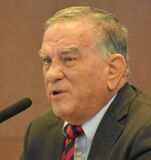 José “Joe” Antonio López was born and raised in Laredo, Texas, and is a US Air Force veteran. He now lives in Universal City, Texas. Joe is the author of several books. His latest is Preserving Early Texas History (Essays of an Eighth-Generation South Texan), Volume 2. Lopez is also the founder of the Tejano Learning Center, LLC, and www.tejanosunidos.org, a website dedicated to Spanish Mexican people and events in U.S. history that are mostly overlooked in mainstream history books.
0 Comments
How the Holiday Season is Changing the National Identities of Mexico and the U.S. If you have traveled abroad lately, you may have noticed that national identities are becoming a bit vague. The cultural uniqueness that used to distinguish one nation from another has been quickly disappearing thanks to the accelerated pace of cultural contact brought about by globalization. Mexico and the USA illustrate this well as we go through the holiday season. Millions of Mexican immigrants, legal and undocumented, as well as tourism between both countries have created cultural contact zones unlike any in human history. As they have settled in these areas of the United States, Mexicans have adopted American habits even as they have maintained much of the cultural heritage they brought with them. For example, they love Thanksgiving turkey and on Black Friday you can find them shopping like crazy across the malls alongside Americans. December, however, is a Mexican fiesta north of the border. Los americanos are growing accustomed to seeing and joining the solemn Virgen de Guadalupe celebrations around December 12th and breaking piñatas in the noisy, colorful Posadas on December 15th-24th. Moreover, Mexicans have fused seamlessly La Noche Buena (Christmas Eve) and Christmas Day, so they can have their tasty tamaladas and receive the birth of Jesus with tons of gifts the good old American way. As many Mexican immigrants return to visit family in Mexico, they bring along these new cultural customs, especially their sons and daughters who were born and raised in the United States. You can see the influence of these new cultural ways in small towns and cities across the country. Mexicans now have their Buen Fin, a clone of Black Friday, and on Thanksgiving more and more people are preparing a turkey dinner a la americana or go to restaurants that offer a similar menu. As for Santa Claus, Christmas trees and carols, they are the norm everywhere. It may seem strange, but in Mexico City and Cuernavaca, you can even go ice-skating downtown! You could say Cinco de Mayo was the first cultural celebration to bring Americans and Mexicans together, and that lately Día de los Muertos and Halloween have provided more cultural glue that binds people on both side of the border. But it is the long holyday season at the end of the year that is having the biggest impact on our identities and how we see ourselves in Mexico and the United States. Mexicans who visit the U.S. and Americans who travel to Mexico are bewildered by this turn of events. National identities may still be around, but the unique cultural elements that separated them are blending fast and, in some cases, disappearing and becoming a thing of the past. 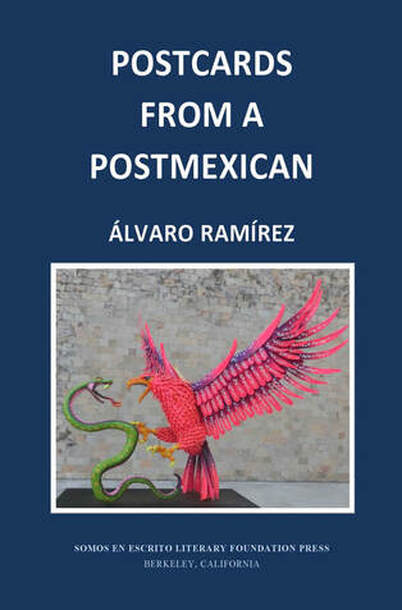 Somos en escrito Literary Foundation Press published a compilation of Álvaro Ramírez’s observations on changing cultural traditions: Postcards from a PostMexican. Click the cover above or visit Amazon to buy a copy. This postcard first appeared on Álvaro Ramírez’s Postcards from a PostMexican blog on December 24, 2019. This postcard was published under the title “How the Holiday Season is Changing Mexican and American Cultural Identities” in Cultura Colectiva, a Mexican online magazine, on January 2, 2020. 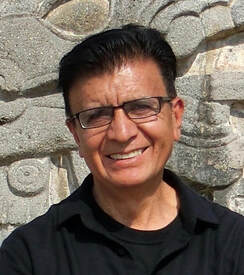 Álvaro Ramírez is from Michoacán, México. He migrated with his family to Ohio as an adolescent. He obtained a BA in Spanish and Education at Youngtown State University, and an MA and PhD in Literature from the University of Southern California. He has taught at various institutions including the University of Southern California, Occidental College, and California State University, Long Beach. Since 1993, he has worked at Saint Mary’s College of California where he is a Professor in the Department of World Languages and Cultures. He specializes in Spanish Golden Age and Latin American literature as well as Mexican Film and Chicano Cultural Studies. He also serves as Resident Director for the Saint Mary’s College Semester Program in Cuernavaca, México. In 2016, Prof. Ramírez published a collection of short stories, Los norteados, which received an Honorable Mention Award at the 2017 International Latino Book Awards. In addition, he has edited two online publications of Conference Proceedings: Imágenes de postlatinoamérica, volumen 1 (2018) and Imágenes de postlatinoamérica, volumen 2 (2019). He has also published articles on Don Quixote, Mexican film, and Chicano Studies in several academic journals. 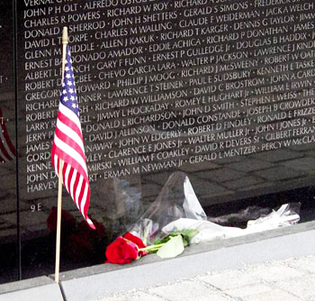 Remembering Remembering Remembering Remembering Reflections on the Wall By Rafael Jesús González For sometime now, I have shared my thoughts during my visit to the Vietnam Memorial in 2006 as my way of honoring Memorial Day: Reflections on the Wall My first day in Washington D.C., in the heat of August, straight from the Museum of the American Indian, wearing my T-shirt picturing the Apache Gerónimo and his armed companions and reading, "Homeland Security, Fighting Terrorism since 1492," I walk down the Mall, skirt the obelisk of the Washington Monument, down the reflecting pool, past the white marble Greek temple of the Lincoln Monument, to the Viet-Nam Wall - a pilgrimage to the memorial to "my war," mine not because I fought in it, but because I fought against it - heart, mind, and soul. My intent, a kind of penance, like saying the rosary, is to start at one end to the other and read each and every one of the 58,245 names, imagining a face, an age, a history, a life. I know it will be hard, but do not think it impossible (not one of the five million names of the Vietnamese dead are even alluded to.) I start with one name, John H. Anderson Jr. (PFC, 19 years of age, dead May 25, 1968, I later look up in the log), then several, increasing exponentially. It becomes more and more difficult to focus, the faces, the figures of families, lovers, tourists reflected moving against the mirroring black granite Wall is a distraction, their chatter, at times their laughter, an intrusion upon my meditations. As the Wall grows longer, rises higher and higher toward the center, the names crowd upon each other, pile up high and tight, at times difficult to distinguish, I do not know if for the numbers, the height, for the glare of the sun, or for the tears welling in my eyes. The names, the letters blur, run together. I begin to skim, to let my attention chance upon a name, a Smith, a Cohen, a Bankowski, an O'Mally, a Chan, certainly a González here and there - every European and many another culture represented by a name. How came they to be there, what history of need, what myth or dream of theirs, or of some recent or distant ancestor, brought them to be "American" and die in a war without sense or reason? After a time my reading becomes cursory, I occasionally stop, kneel to pick up and read a letter, a note of testimonial - of love, of remembrance - left at the foot of the Wall by some surviving wife, sweetheart, mother, father, son, daughter, brother, sister, nephew, niece, friend. A flag here and there, a flower (mostly artificial, a few in soda bottles, wilting in the heat.) My mind gradually becomes numb, at times almost hallucinatory, wonders -imagines seeing the name there of a moneyed coward with powerful political connections that now inhabits a white house not far away. * * * They say the dead live on for as long as they are remembered. How many of these names etched here are still remembered? A few people, holding scraps of paper against the black stone make rubbings. Most hurry by, the kids impatient to reach the end, the names picked there not interesting enough to hold their attention. The names. Last year, Xochipilli, my men's ritual group, in collaboration with the 'Faces of the War Project,' created an Ofrenda to the Victims of War for the Días de los Muertos Community Celebration at the Oakland Museum of California. The ofrenda stood against the walls lined with the photographs and names of the U. S. soldiers dead in Iraq, the names, without the photographs, of Iraqi dead. The names, still fresh, living in recent memory. Another war, as senseless, as irredeemable as that of Viet-Nam. I am tired, my face wet with sweat and tears I do not bother to wipe away. Tourists look at me, respectfully keep their distance, look away. They sense that this, that of Viet-Nam, is my war; I do not know if my shirt gives them a clue as to why. * * * I reach the other end of the Wall, Jessie Charles Alba (Sgt., aged 20, dead May 25, 1968, the middle of the war.) * * * Retracing my way up the reflecting pool, I must climb the steps of the Lincoln Memorial from which Marian Anderson once sang, from which Martin Luther King, Jr. spoke of his dream. I stand before the colossal figure of Lincoln enthroned and read his words chiseled into the white marble to his right: " . . . a government of the people, for the people, by the people . . ." A pious hope devoutly to be wished. Reflexiones sobre el Muro Por Rafael Jesús González El primer día en Washington D.C., en el calor de agosto, justo del Museo del Indio Americano, llevo mi camiseta con la imagen del apache Gerónimo y sus compañeros armados que lee, "Homeland Security, Luchando contra el Terrorismo desde 1492." Camino por la alameda, el Mall, rodeo el obelisco del monumento a Washington, sigo la alberca, paso el templo griego de mármol blanco del monumento a Lincoln, al Muro de Vietnam - peregrinaje al monumento a "mi guerra," mía no porque luché en ella, sino porque luché en oposición de ella - corazón, mente y alma. Mi intención, un tipo de penitencia, como decir el rosario, es empezar de una punta a la otra y leer cada uno y todos los 58, 245 nombres, imaginándome un rostro, una edad, una historia, una vida. Sé que será difícil, pero no lo creo imposible (ni siquiera se alude ni a uno de los cinco millones de nombres de los vietnamitas muertos.) Empiezo con un nombre, John H. Anderson Jr. (PFC, 19 años de edad, muerto el 25 de mayo 1968, más tarde busco en la lista), luego varios, aumentando exponentemente. Se me hace más y más difícil enfocarme, las caras, las figuras de familias, amantes, turistas reflejados moviéndose contra el espejo del Muro de granito negro es una distracción, su parloteo, a veces su risa, una intrusión en mis meditaciones. A grado que el Muro se hace más largo, se eleva más y más alto hacia el centro, los nombres se amontonan uno sobre el otro, se amontonan alto y apretado, a veces difíciles de distinguir, no sé si por la cantidad, la altura, el relumbre del sol o las lágrimas que me llenan los ojos. Los nombres, las letras se borran, se corren una contra la otra. Empiezo a pasar los nombres por en cima, dejar mi atención caer sobre un nombre u otro, un Smith, un Cohen, un Bankowski, un O'Mally, un Chan, indudablemente un González aquí y allá - toda cultura Europea y muchas otras representadas por un nombre. ¿Cómo llegaron a estar allí, que historia de necesidad, que mito o sueño suyo, o de algún antepasado reciente o lejano, los trajeron a ser "americano" y morir en una guerra sin sentido o razón? Después de algún tiempo mi lectura se hace superficial, paro de vez en cuando, me arrodillo a levantar y leer una carta, una nota de testimonio - de amor, de recuerdo - depositada al pie del Muro por algún sobreviviente, esposa, novia, madre, padre, hij@, herman@, sobrin@, amig@. Una bandera aquí y allá, una flor (la mayoría artificiales, unas cuantas en botellas de refresco, marchitándose en el bochorno. La mente se me entume gradualmente, a veces casi halucinante, se desvía - imagina ver allí el nombre de un cobarde adinerado con conexiones políticas poderosas que ahora habita una casa blanca no lejos de aquí. * * * Dicen que los muertos viven mientras sean recordados. ¿Cuántos de los nombres aquí grabados son aun recordados? Algunas personas, poniendo trozos de papel contra la piedra negra hacen borradores. La mayoría se apresuran, los muchachos impacientes a llegar al final, los nombres cincelados allí no lo suficiente interesantes para captarles la atención. Los nombres. El año pasado, Xochipilli, mi grupo de hombres dedicado a la ceremonia, en colaboración con el 'Proyecto Rostros de la Guerra', montó una ofrenda a las víctimas de la guerra para la Celebración Comunitaria del Día de Muertos en el Museo de California en Oakland. La ofrenda se montó contra las paredes cubiertas de las fotografías y nombres de los soldados estadounidenses muertos en Irak, los nombres, sin fotografías, de muertos Iraki. Los nombres, aun frescos, vivientes en la memoria reciente. Otra guerra, tan insensata, tan irredimible como la de Vietnam. Estoy cansado, la cara húmeda de sudor y llanto que no me preocupo de limpiar. Me miran los turistas, respetuosamente guardan la distancia, alejan la mirada. Sienten que esta, la de Vietnam, es mi guerra; no sé si mi camiseta les sugiera por que. * * * Llego al otro extremo del Muro, Jessie Charles Alba (Sgt., 20 años de edad, muerto el 25 de mayo 1968, a mediados de la guerra.) * * * Retrazando mis pasos a lo largo de la alberca, me siento obligado a subir los escalones del monumento a Lincoln desde los cuales Marian Anderson una vez cantó, desde los cuales Martin Luther King, Jr. habló de su sueño. Paro ante la figura colosal de Lincoln entronizado y leo sus palabras cinceladas en el mármol blanco a su derecha: ". . . un gobierno del pueblo, para el pueblo, del pueblo . . ." Esperanza pía devotamente anhelada. 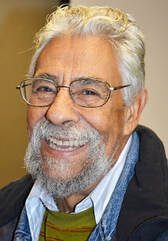 Rafael Jesús González, poet, activist, named first poet laureate of City of Berkeley, California, in 2017, and an esteemed contributor to Somos en escrito Magazine. This statement was written in Washington D.C., August 15, 2006. © Rafael Jesús González 2018. |
Archives
February 2024
Categories
All
|
Donate and Make Literature Happen
is published by the Somos En Escrito Literary Foundation,
a 501 (c) (3) non-profit, tax-exempt corporation. EIN 81-3162209



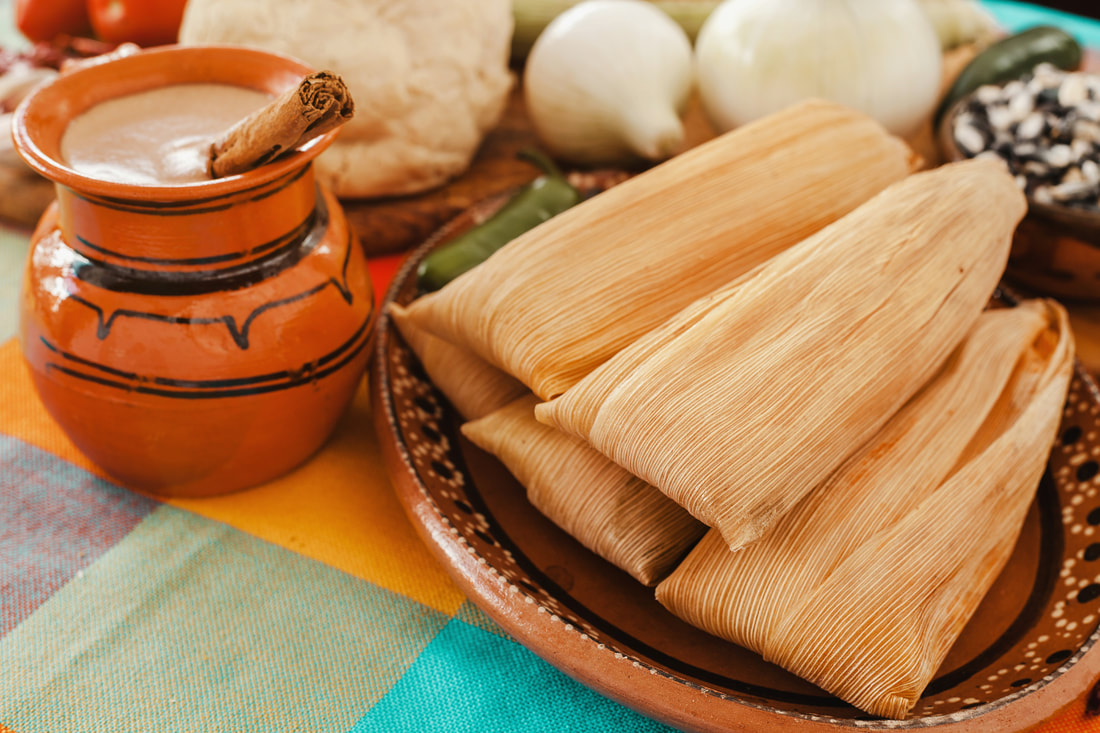
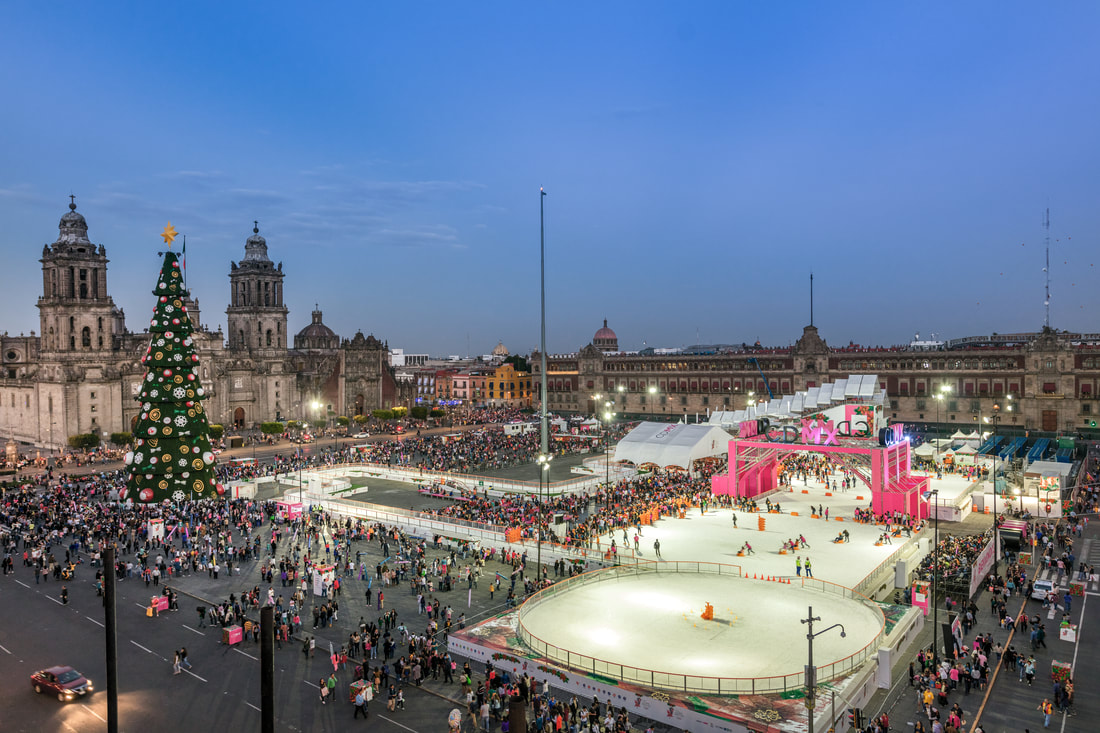
 RSS Feed
RSS Feed